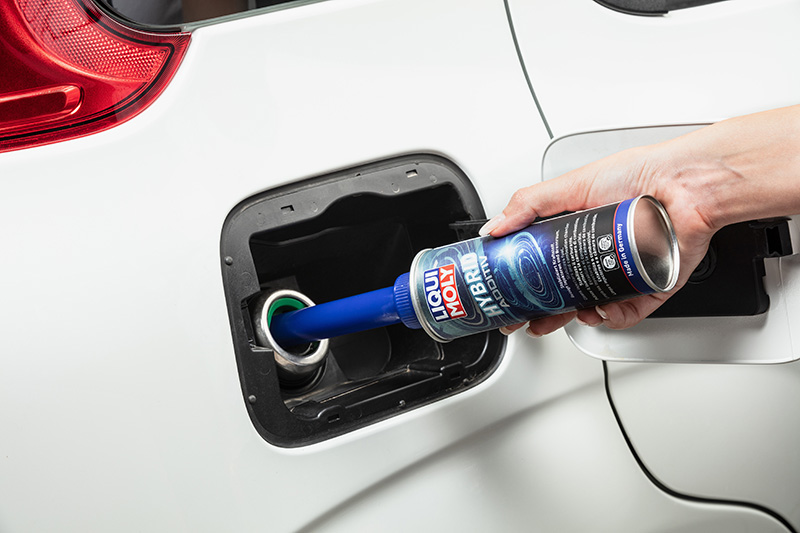
In this series of articles, Liqui Moly investigates common vehicle problems and proposes a solution.
Problem: Old petrol in hybrid vehicles
Solution: Liqui Moly Hybrid Additive
Assessment:
If a combustion engine is rarely used, this is a case for the Liqui Moly’s hybrid additive. The combination of combustion engine and electric drive can lead to problems if a plug-in hybrid is predominantly run on electric power. In this case, the combustion engine has to deal with the challenges faced by any combustion engine that is only used sporadically.
The less frequently the combustion engine runs, the longer the petrol remains in the tank. Petrol cannot be stored indefinitely: it oxidizes and ages. Aged petrol and a modern engine don’t go well together. If the engine only runs sporadically, this causes enormous stress – it has to undergo lots of cold starts and never really gets up to operating temperature. This produces a lot of deposits in the injection system, thereby reducing efficiency and increasing the risk of problems.
Hybrid additive counteracts both problems, stabilising the petrol and removing deposits from the injection system. This means the combustion engine is ready whenever needed. The hybrid additive is suitable for use in the workshop, but can also be sold to customers. And it’s extremely simple to use: all you have to do is pour it in the tank.
Frequent cold starts affect engine oil, too. Petrol penetrates the oil and does not evaporate, thereby diluting the oil and resulting in more and more deposits accumulating in the oil circuit. Due to the deposits, it is also advisable not just to do a simple oil change, but to clean the oil circuit with Liqui Moly Engine Flush, too. By combining the two products garages can create special offers for hybrid vehicle drivers. In this way, they can stand out from the competition, demonstrate their technical expertise and generate additional sales simply and easily.









